Day 3 of a three day long weekend of Spring Migration tours on the North Norfolk coast, our last day. It was a lovely bright, sunny day today, still slightly cool in the light NE breeze but warming up nicely out of it.
Our destination for the morning was Burnham Overy Dunes. When we parked and got out of the minibus, we could hear Skylark and Common Whitethroat singing, and a Yellowhammer calling from the hedge behind us.
As we walked down the lane, we could see a small group of Common Swifts hawking low over the trees. They are just arriving back here now from Africa and these would be birds on the move, just pausing briefly to feed. There were more warblers singing along here – a couple of Common Whitethroats with their scratchy songs, a Lesser Whitethroat rattling in the hedge across the field before appearing in the top of an ivy-covered oak tree, plus Blackcap and Chiffchaff too. Crossing the stile, we heard our first Sedge Warblers of the day and a Cetti’s Warbler shouted at us from the bushes.

As we were walking along the path, we saw a brown shape in the bushes right beside us. It wasn’t a bird, but a mouse, more precisely a Wood Mouse. It was completely unconcerned by our presence, standing just a couple of metres away watching it, while it fed on the young leaves and buds.
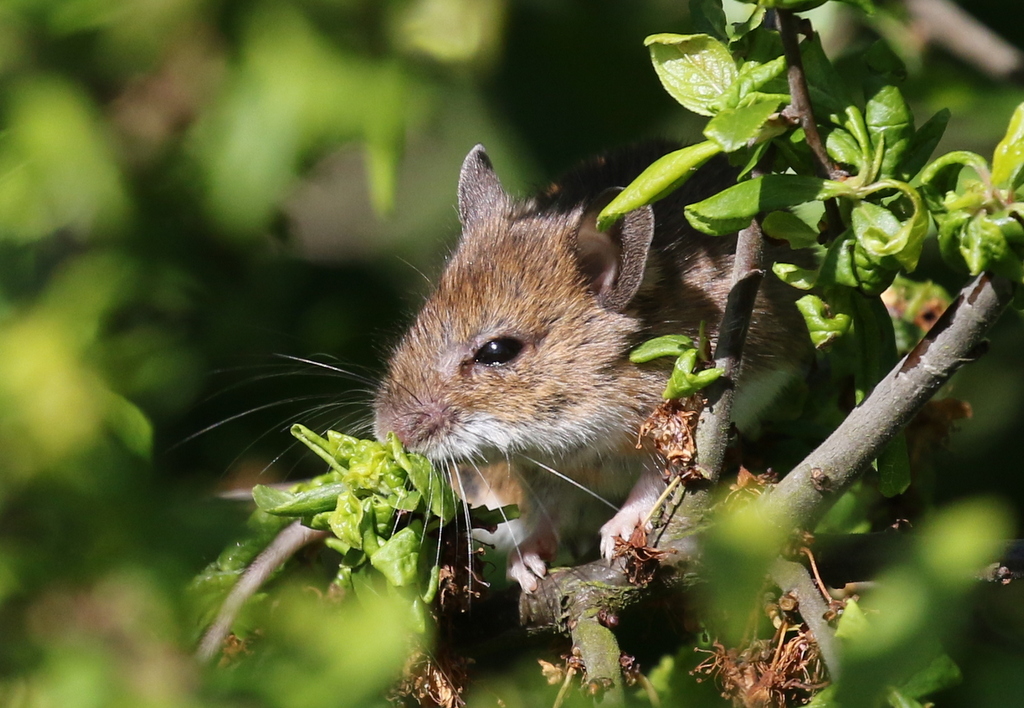
Most of the pools on the grazing marshes along here are very dry, so there are not many nesting waders here this year. There were still a few Oystercatchers and one or two Lapwings in the grass. There was a bit more water on the edge of the reedbed, where the cows were making a nice muddy edge. A Common Sandpiper was enjoying the fruits of their labours, but was hard to see. A Yellow Wagtail flew over calling.
Looking out across the grazing marsh towards Holkham, we could see a large white bird flying towards us. Its long bowed wings with leisurely flight action and long black legs identified it as a Great White Egret, even before we could see its long dagger-shaped yellow bill as it passed by low overhead. There were several Little Egrets flying back and forth too, and a very distant Spoonbill. We had hoped to find the Purple Heron which had been feeding in the ditches here for the last week or so, but there was no sign of it today. With the improvement in the weather, perhaps it had finally decided to move on.
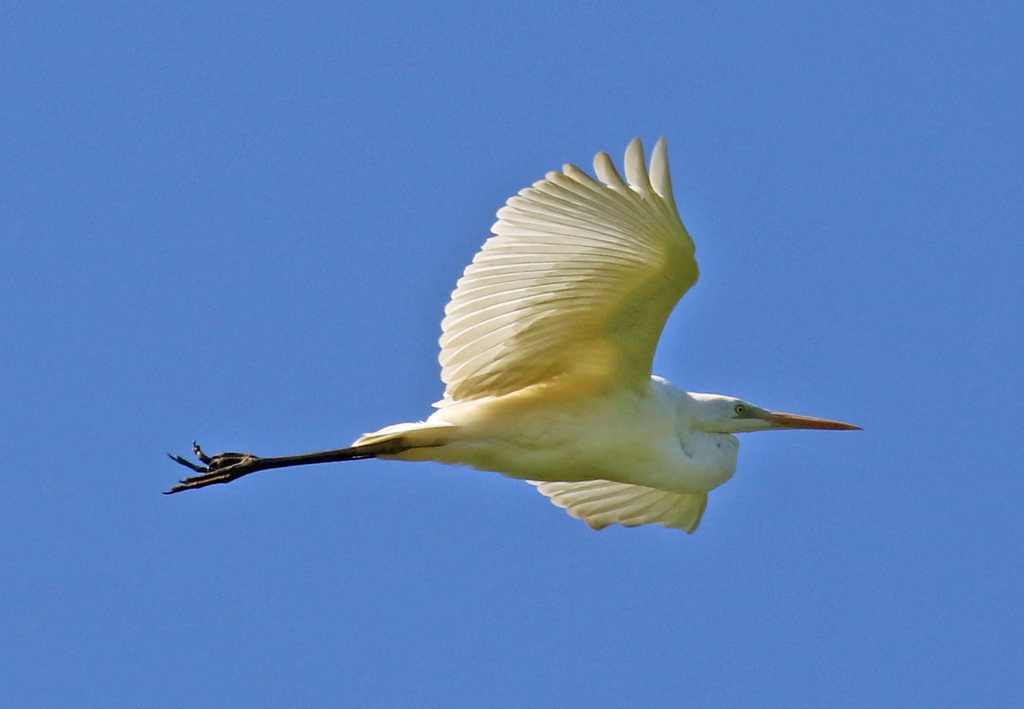
There were more Sedge Warblers singing in the bushes and ditches either side of the path and a Reed Warbler started up down in the reeds. It was good to hear the songs of both species – the metronomic Reed Warbler very different from the mad buzzing unstructured song of the Sedge Warbler.
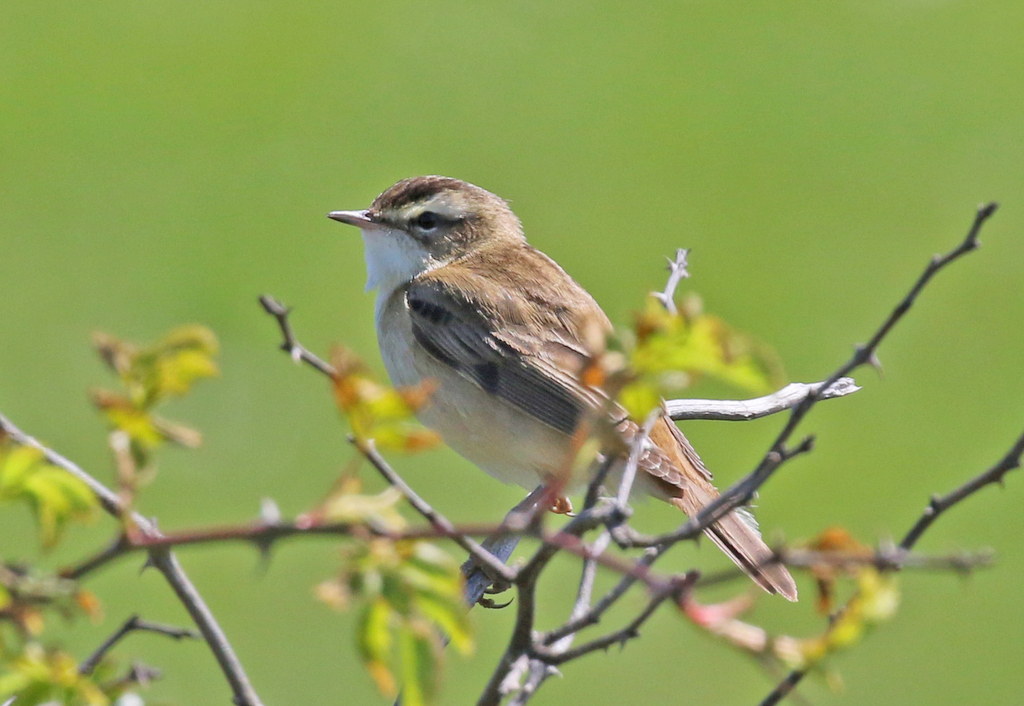
From up on the seawall, we could see the tide was still out in the harbour. There were a few Avocets, Redshanks and Shelducks feeding on the mud, and a Curlew roosting in the vegetation beyond, but no other waders here today. A couple of Little Terns were hovering over the harbour channel further back. A large flock of Brent Geese flew up from the saltmarsh out in the middle – they should be leaving soon now, on their way back to Siberia for the breeding season.
The pool out in the reedbed had a selection of ducks on it. As well as the usual Tufted Ducks and a pair of Common Pochard, we could see a single drake Wigeon, a lingering bird after most of the Wigeon which spent the winter here have already departed. A Little Grebe was out in the middle of the pool too, and another laughed at us from the reeds. A Bearded Tit called and flew out of the reedbed, up over the bank right past us, before disappearing down into the reedy ditch round the corner of the path.
The grazing marshes beyond the reedbed are still wetter, with more breeding waders as a conseuqence, Lapwings, Avocets and Redshanks around the small pools. There were lots of Greylag Geese out on the marshes, including at least one pair with goslings. A single Pink-footed Goose was sitting down in the grass further back, presumably a sick or injured individual which couldn’t make the journey back to Iceland for the breeding season. When two Muntjac walked out of the reeds and across the grazing marsh it caused pandemonium, the geese with their necks up honking and all the waders alarm calling.
On the way out to the dunes, there were a few Linnets and Reed Buntings in the suaeda below the bank on the harbour side, which we stopped to admire. A Lesser Whitethroat in the bushes by the boardwalk was most likely a migrant, just stopping off here on its way further north.
Into the dunes, and there were lots more Linnets and Meadow Pipits feeding in the short grass. Then over the first ridge we found several Wheatears too, including a couple of smart males, with black bandit masks. Interestingly they appeared to be rather pale southern birds, with silvery grey backs and creamy throats, rather than the darker birds with more rufous underparts which often predominate as the season progresses, and which are presumably heading further north.
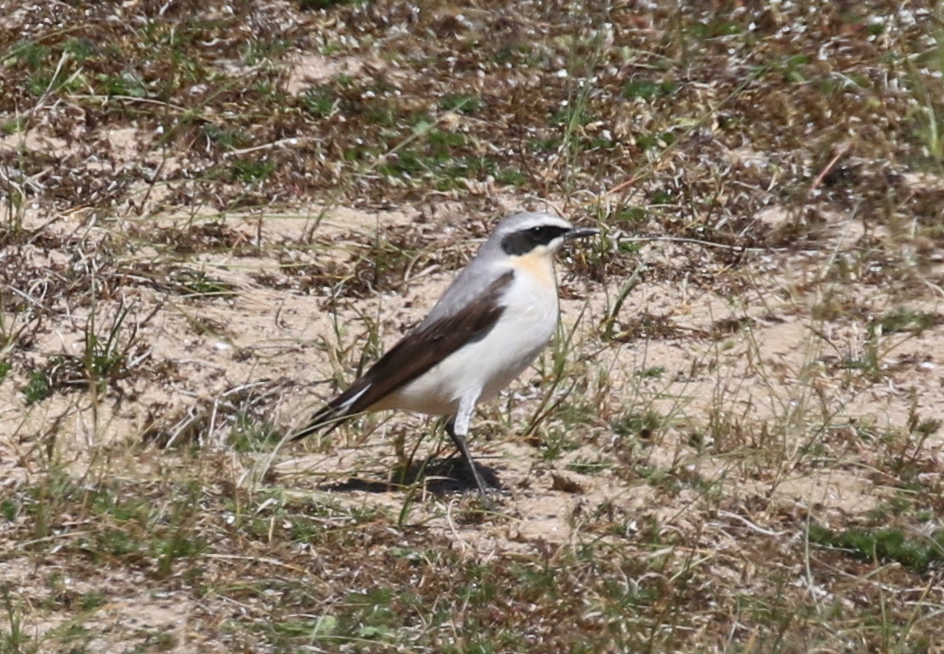
There were lots more butterflies out in the dunes now in the warmer weather, including our first Brown Argus, Common Blue and Small Heath of the year, as well as Small Copper and several Wall Browns.

We found a couple of pairs of Stonechats in the dunes, both with fledged young already. Good to see they are doing well here this year. We could hear a Cuckoo calling further up, and looked over just in time to see it fly up out of the bushes and up into the pines. A Willow Warbler was singing in the willows beyond the fence too. The walk out here had taken quite some time and we had one eye on the clock, as we didn’t want to be too late back for lunch. We didn’t have much time, but we wanted to have a quick look in the bushes over by the pines, so we pressed on quickly.
As we walked up over the dunes, a female Common Redstart flicked across and disappeared into the thicker bushes on the stop. We stood and waited to see if it might reappear but when someone appeared round the back of the bushes we saw a male Redstart briefly under the bushes before it was spooked and disappeared deeper in. We gave it another minute, but there was no sign of either of them reappearing, so we moved on.
There had been a Wryneck here yesterday and at this point we were informed it was still around today. It had been seen earlier on the short grass beyond the fence but hadn’t been seen for some time. We had a quick look, but we were out of time now and had to start heading back. As we turned to go, someone called over to say the Wryneck was now in the bushes in the dunes. Thankfully it wasn’t long before it appeared, feeding on a bare area at the base of a large privet clump. We had a nice view of it through the scope, before it flew back into the bushes and disappeared.
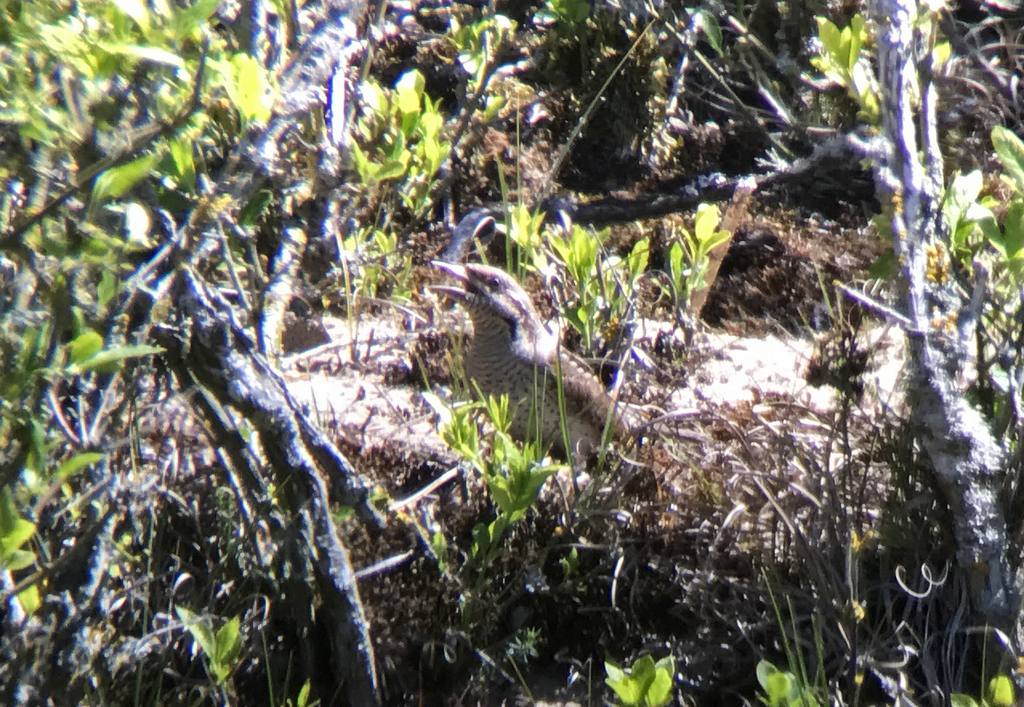
We had thought with the clear weather last night that the Wryneck might have moved on, so it was great to catch up with it. They bred more widely in the UK historically but are now just scarce migrants here, passing through in small numbers on their way up to Scandinavia.
On the walk back, we stopped for a better look at one of the male Wheatears in the dunes. Then we stopped again at the boardwalk, where a Whimbrel was feeding round the pools on the edge of the saltmarsh. We could see its short bill and pale crown stripe through the scope. Another migrant stopping off here on its way north.
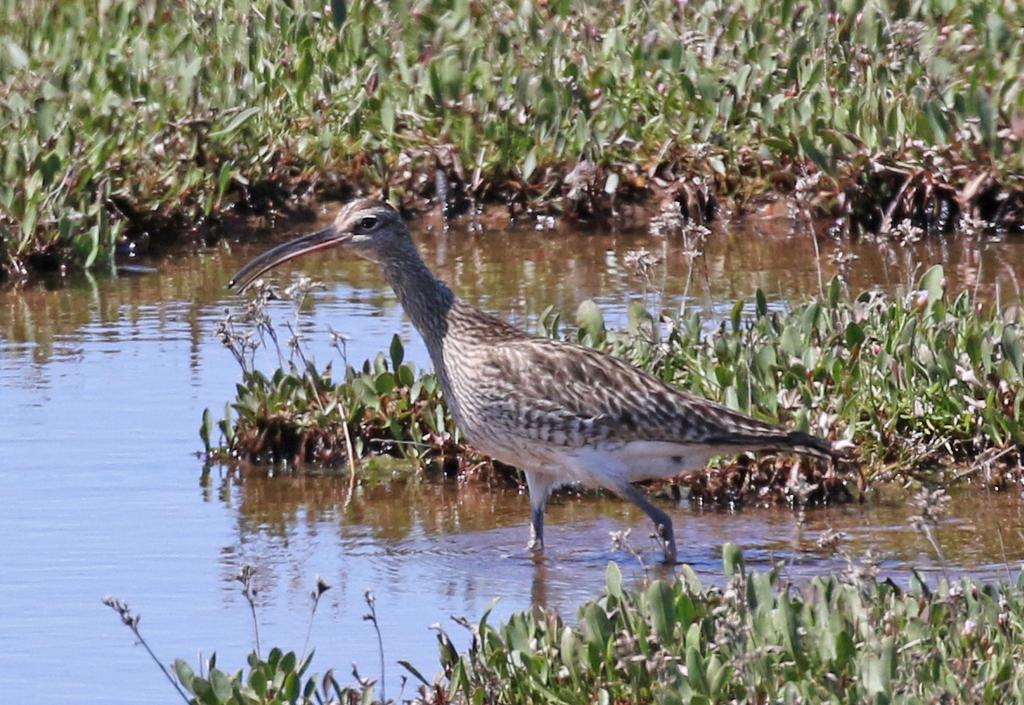
When we got back to the path across the grazing marsh, a Spoonbill was feeding on one of the pools close to the path. We could see it sweeping its bill from side to side in the shallow water as it walked round with its head down. It disappeared behind a bank, but then walked out onto the front edge where we could see its yellow-tipped black bill and shaggy nuchal crest, a smart breeding adult.
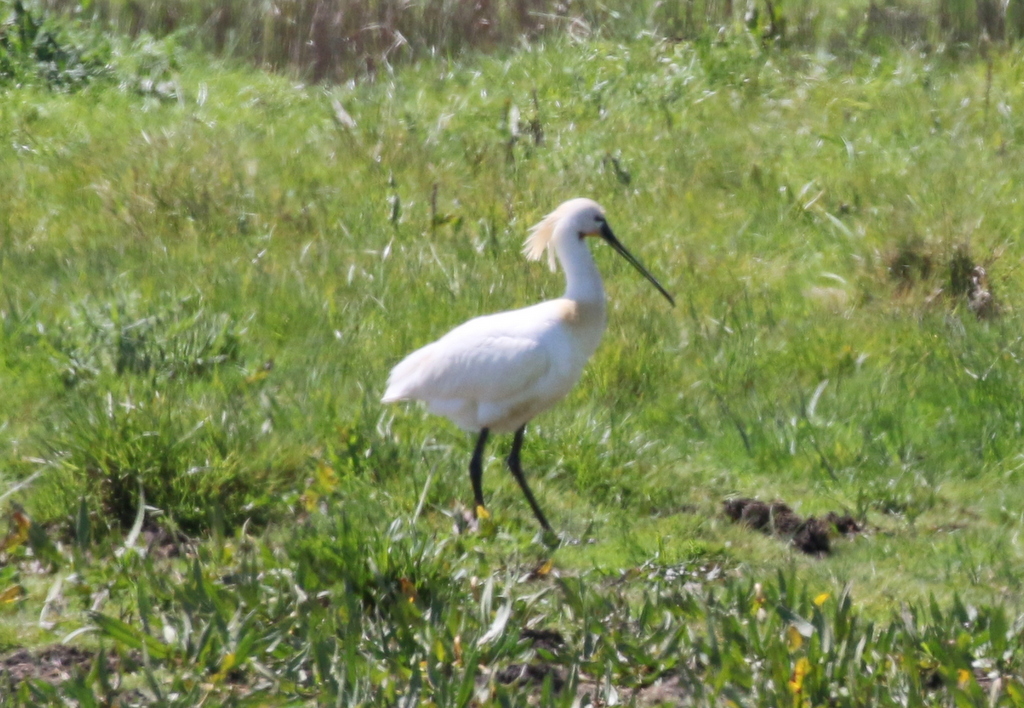
While we were watching the Spoonbill, we heard the shrill call of a Yellow Wagtail and looked over to see it dropping down behind one of the cows right beside path. We walked back and could see it in the long grass. It was a female and rather a dark grey one too, with a rather limited pale supercilium just in front of the eye, but unfortunately it was off again almost immediately. It appeared to be a female of the thunbergi subspecies, known as Grey-headed Wagtail, which breeds in the north of Scandinavia.
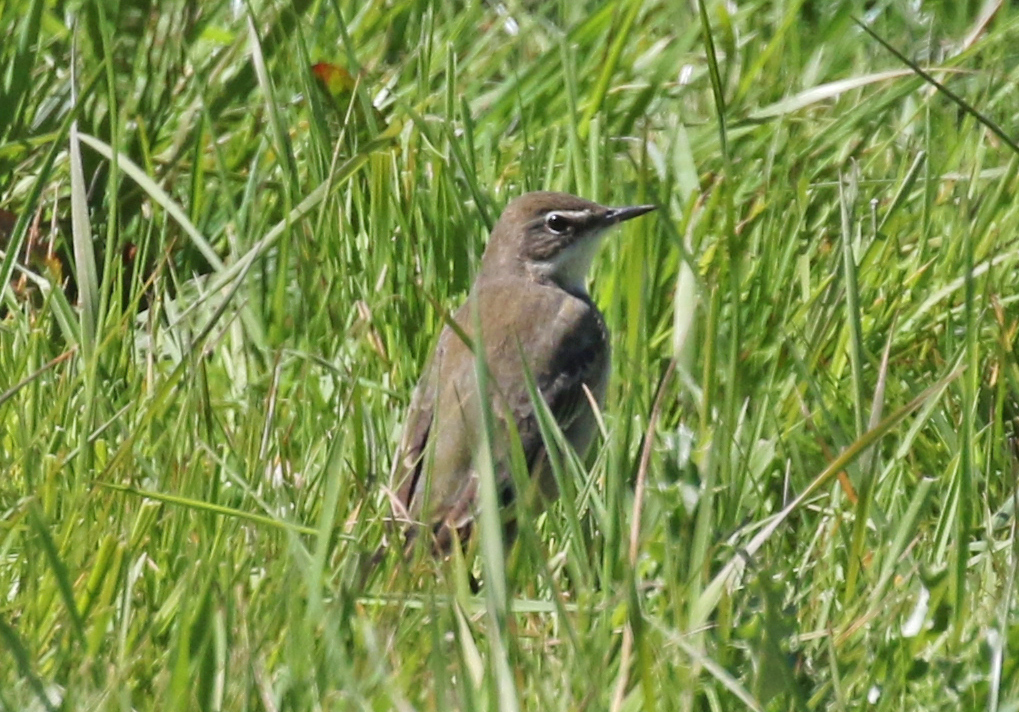
When we got back to the minibus, we stopped for a rest and scanned back over the marshes towards the dunes. There were some distant raptors circling over the middle of the grazing marshes, a kettle of Common Buzzards, and when we looked more closely we could see a very distant Hobby in the same view, hawking for insects. A Marsh Harrier was much closer, a male hunting over the field on the other side of road.
Driving round to Holkham, we were not expecting to be able to get in to Lady Anne’s Drive on a sunny Sunday, but it was not too busy today and, even better, the Lookout cafe was surprisingly quiet. We stopped here for lunch.
After lunch, we had a quick walk west along the path on the inland side of the pines. There were more warblers singing, despite it being the early afternoon lull and warm here today – Blackcap, Chiffchaff and a single Willow Warbler still singing its sweet descending scale. There were a few Long-tailed Tits in the trees by the path and more butterflies out in the sunshine, including Speckled Wood and Orange Tip here.
We made our way straight out to Joe Jordan Hide and when we opened the flaps we could see three Spoonbills out on the edge of the pool below the wood. One was noticeably smaller and whiter, with a short bill. It was one of the first fledged juveniles of 2019, a ‘teaspoon-bill’, and speaking to one of the wardens was the first time one had been seen outside the breeding colony. It was begging for food, nodding its head vigorously up and down and chasing after one of the adults.
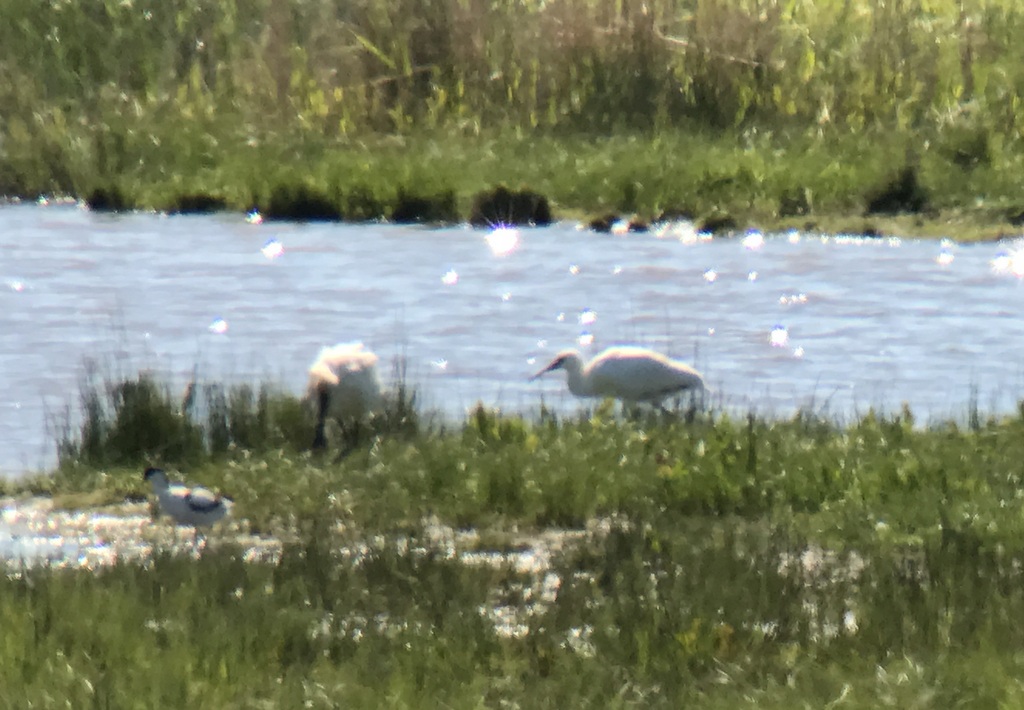
There were a couple of Mistle Thrushes down in the grass in front of the hide. They were collecting food, and flew up into the trees behind the hide, where presumably they had nestlings. An Egyptian Goose was down on the edge of the nearest pool and a Marsh Harrier was hunting up and down one of the reedy ditches further back. We could see all the Cormorants in their big stick nests in the taller trees.
It was lovely sitting in the hide watching the comings and goings out on the marshes here, not least because the hide was out of the wind and warmed nicely by the sunshine, but we had one other thing we wanted to do this afternoon, so we had to tear ourselves away and walk back. On the way, we stopped to look at a recently emerged Hairy Dragonfly basking on the branch of a holm oak, where it was very well camouflaged and impossible to see until you knew where it was. Back almost to Lady Anne’s Drive, we head a Chaffinch alarm calling and looked up to see a Jay in the poplar trees.
Round at Wells, we stopped to scan the flooded fields which were full of waders and wildfowl. We quickly found a couple of Wood Sandpipers, down on the edge of the water, feeding in and out of the vegetation. We could see their white-spangled upperparts and well-marked pale supercilium. There were several larger Redshanks with them, and in the grass nearby were several Lapwings with small fluffy juveniles running around.
On the pool the other side of the track, a Greenshank stood out from the Redshanks with its bright white underparts catching the sun and paler grey upperparts. A couple of Common Snipe were sleeping on the edge of the vegetation out in the middle and we found a Common Sandpiper right over the far side, bobbing its way along the muddy bank.
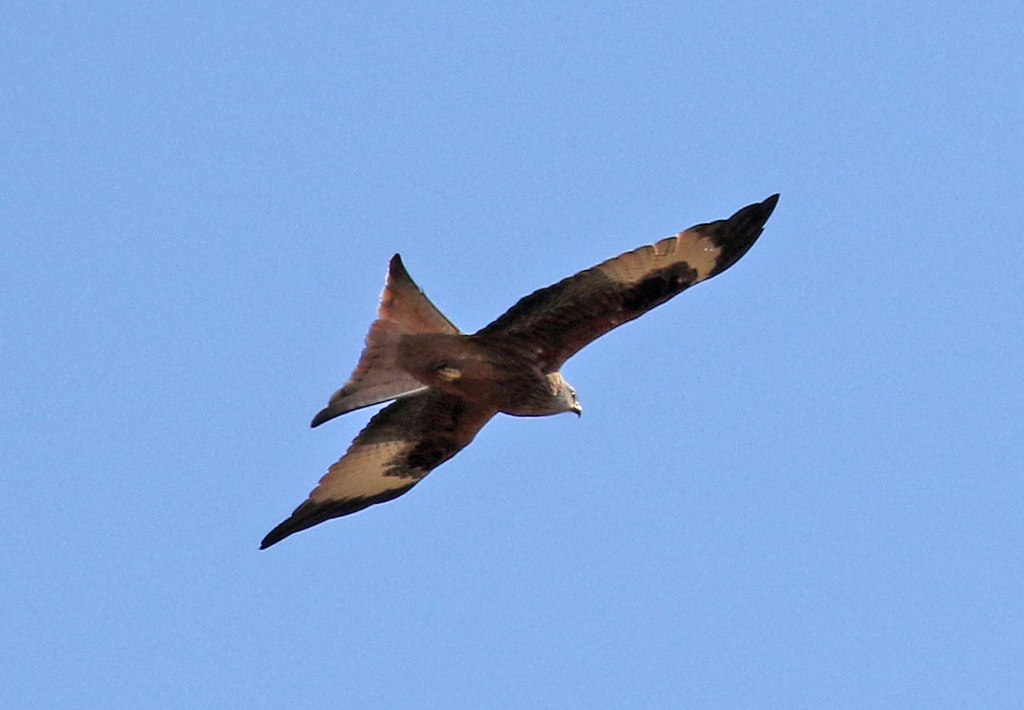
A Red Kite drifted over lazily behind us, and someone further along the track shouted and pointed up to alert us to a Peregrine circling over. As we watched the Peregrine disappearing over towards Wells, we could see a big flock of around 30 Common Swifts hawking high in the sky on the edge of town.
It was a nice way to end the day, standing here in the afternoon sunshine. It had been a very enjoyable three days, with lots of interesting spring migrants, but it was time to pack up and head for home.
















